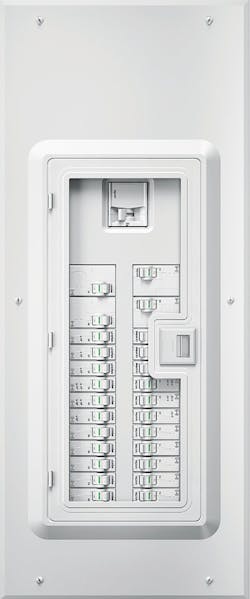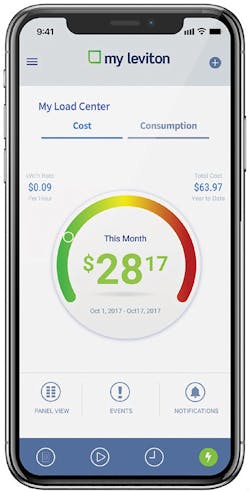Innovative Products: Leviton Smart Load Center
The Smart Load Center—the first circuit breaker system of its kind, according to Leviton—brings smart, trackable tech to the electrical panel. Previously, users could add individual smart plugs to a load center; Leviton’s system eliminates that need and connects the full energy infrastructure to the internet, the cloud, and ultimately the user.
The system can be monitored via the My Leviton app on smartphone, tablet, or desktop, and, as a result, can lessen the amount of time users spend standing at the panel, troubleshooting breaker issues.
Users can monitor circuit status through the app and determine which individual breaker may need attention. Alerts can be customized so if a breaker trips or other issue arises, the user will know immediately, even if he or she is not home. Data and insights are provided on all individual breakers, and users can turn any breaker off with just a tap (although they must be manually turned back on).
Another great feature? The app breaks down a home’s average energy costs and consumption patterns into detailed insights. Users can see a break down per year, month, or day, or per individual circuit. That data can then be used to modify home energy usage habits, saving money and power.
Users can monitor circuit status through the app and determine which individual breaker may need attention.
Smart capabilities can be added to existing Leviton Load Centers (by a licensed electrician) with the addition of the company’s Data Hub kit and smart circuit breakers. Pricing depends on the load center configuration as well as the number of smart circuit breakers, their rating, and type: In a typical 2,500 sf home, for a full smart system, the installed cost can range between $2,500 and $4,000.

